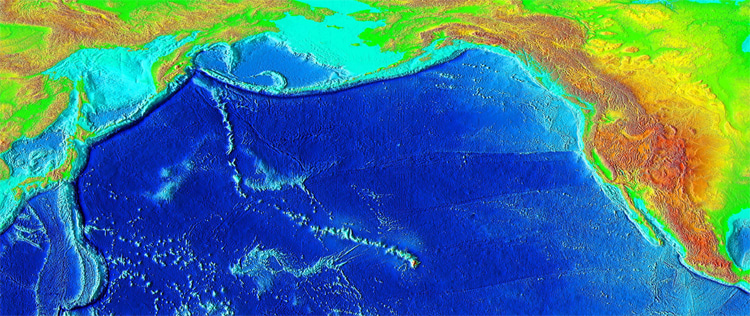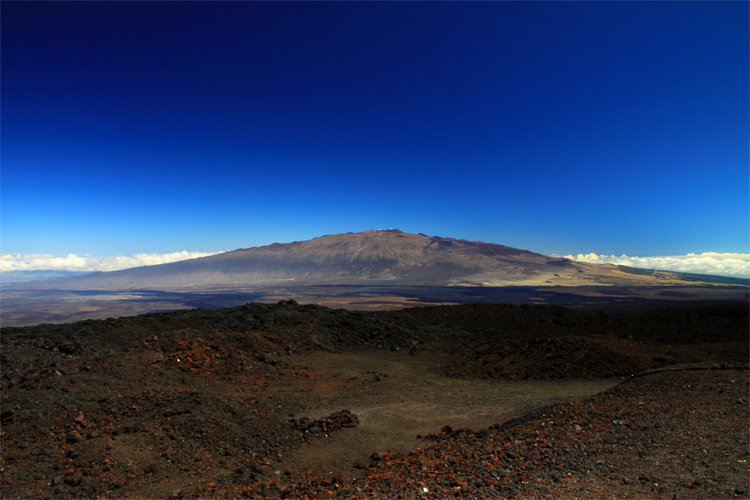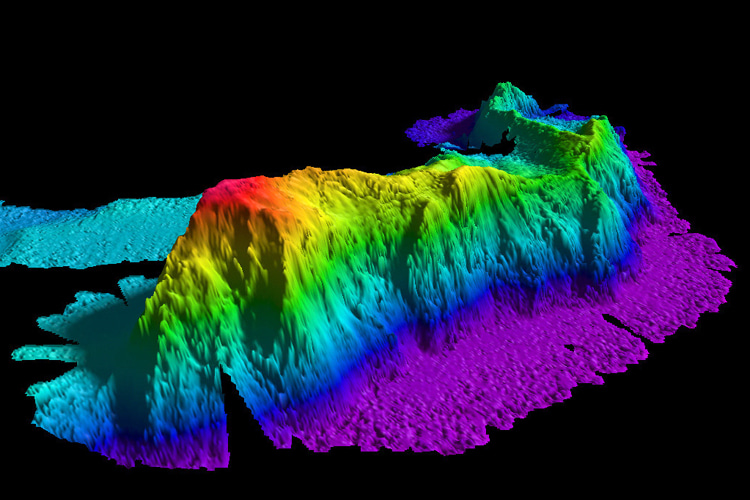The five oceans of the world hide many living and non-living secrets. Seamounts are underwater mountains, and some even rival the height of the tallest peaks on land.
A seamount is a large submarine landform rising at least 3,281 feet (1,000 meters) from the seafloor.
Unlike islands, seamounts do not break the ocean's surface.
Most are remnants of extinct volcanoes formed as magma pushes through the Earth's crust and solidifies.
Over time, i.e., millions of years, erosion and subsidence can shape these volcanic features into distinct forms similar to those we can actually climb on land.
Seamounts with flat tops, called guyots or tablemounts, are evidence of past wave erosion before they sank back below sea level.
But they can also form the ring-shaped coral reefs surrounding a lagoon called atolls.
These underwater formations are not only diverse in form but also in scale.
From small peaks barely meeting the height criterion to massive structures like the Detroit Seamount in the Pacific, with its 39,000-square-mile (100,000-square-kilometers) base, there are all sorts of striking features of the ocean floor.
The Cortes Bank, which is technically a seamount, occasionally provides spectacular waves for surfing 110 miles (177 kilometers) west of the coast of San Diego, California.

How Are Seamounts Formed?
As we've seen above, seamounts are predominantly volcanic in origin, created by processes such as:
- Mantle Plumes and Hotspots: Rising magma plumes from the Earth's mantle create volcanic islands and seamount chains. The Hawaiian-Emperor seamount chain is a well-known example;
- Mid-Ocean Ridges: Divergent tectonic plates at mid-ocean ridges allow magma to rise and solidify, forming volcanic features;
- Island Arcs: Subduction zones, where one tectonic plate is forced under another, generate seamounts along island arcs like the Marianas;
Where Are They Found?
Seamounts are distributed across every ocean basin, with the greatest concentrations in the Pacific Ocean.
They are often clustered in chains or groups, such as the Emperor Seamounts, which extend northwest from Hawaii.
Other notable chains include the New England Seamounts in the Atlantic and the Louisville Ridge in the southern Pacific.
Interestingly, the Arctic Ocean has very few seamounts, while the North Pacific holds the majority, including the largest mapped seamounts.
Despite advances in mapping technologies like satellite altimetry and multibeam sonar, only a fraction of the estimated 100,000 seamounts have been fully charted.

The Tallest, Deepest, and Longest
A seamount varies greatly in size, from modest elevations to colossal peaks. The most extreme examples are:
- Tallest Seamount: Mauna Kea, though considered an island at its summit, rises more than 33,500 feet (10,200 meters) from its base on the ocean floor, making it the tallest mountain in the world when measured from base to peak;
- Deepest Seamounts: Many are found in the Pacific's Mariana Trench region, where the ocean's depth exceeds 32,808 feet (10,000 meters);
- Longest Seamount: With its 3,900 miles (6,200 kilometers) from the Kamchatka peninsula to the southeast of the Island of Hawaii, the Hawaiian-Emperor seamount chain is probably the longest of its kind;
The Oases of the Deep
Seamounts are biodiversity hotspots, often described as "oases of life" in the deep sea.
Their steep slopes and elevated position create complex current patterns, which help concentrate nutrients and attract marine life.
These nutrient-rich waters support a wide variety of species, including:
- Plankton and Corals: Forming the base of the food chain, they provide habitat and food for other living organisms;
- Fish and Mammals: Many species, including commercially valuable ones like the orange roughy, are drawn to seamounts for feeding and breeding;
- Endemic Species: Some organisms are found only on specific seamounts, hence their ecological importance;
However, these ecosystems are vulnerable to human activities, particularly bottom trawling, a destructive fishing method that scrapes entire habitats from the seamount surface.
Therefore, conservation efforts are critical to protecting these unique ecosystems.
A Danger Lies Beneath
Seamounts are not without risks.
Uncharted seamounts pose navigation hazards; collisions, like the USS San Francisco submarine crash in 2005, highlight the dangers of these hidden giants.
Additionally, flank collapses - massive landslides caused by volcanic activity or structural instability - can trigger tsunamis.
These events, while rare, have the potential for devastating impacts on coastal regions.
Why Explore Seamounts?
Despite their importance, less than one percent of seamounts have been studied in detail. Exploration is vital for several reasons:
- Biodiversity Discovery: Each expedition uncovers new species and ecosystems, many of which are unique to these underwater mountains;
- Geological Insights: Studying seamounts helps scientists understand volcanic processes, plate tectonics, and Earth's history;
- Economic Potential: Seamounts are rich in minerals and support fisheries vital to global economies;
The ability to map and explore these remote features has been improved over time thanks to technological advances like autonomous submersibles and improved sonar systems.
The bathymetric study of the world's oceans can also help us understand the behavior of sea currents and ocean swells.
Still, the sheer number of seamounts presents a nearly endless challenge for oceanographers, researchers, and scientists.
Words by Luís MP | Founder of SurferToday.com


